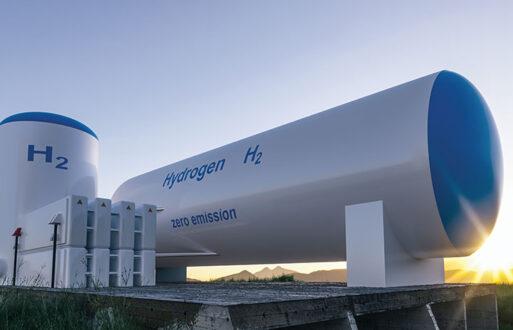If you’re a power trader or portfolio manager, your mornings are crazy busy. You probably start the day before 6 a.m., so if you weren’t already an early riser, you became one. There’s a lot of prep and groundwork to do before submitting day-ahead (DA) bids, including checking the news and weather, forecasting load and prices, reviewing plant availability and maintenance schedules, and netting the gen stack with your bilateral positions.? DA bids are due at 10 a.m. (depending on your market), and you don’t know your awards until later in the afternoon when the market clears. Somewhere in there, you need to figure out how much fuel you might need so you can submit your gas norms and coal burn forecast.
Historically cheap gas competes with coal prices, and the influx of renewables makes this a real challenge. This DA process is where the rubber hits the road, and you need a robust Unit Commitment and Economic Dispatch (UC&ED) model to help make some important fuel-related decisions under uncertainty. UCE&D models should help answer complex questions like:
- Which pipeline(s) should be scheduled, given uncertain weather forecasts?
- If there are potential Operational Flow Orders (OFOs), what balancing penalties might be incurred?
- With multiple fuels and fuel-switching capabilities, how can transportation costs be optimized to produce more cost-efficient and accurate burn forecasts?
The first question has new implications. Just a few years ago, weather mainly impacted load, but now, you get hammered on both sides due to the large amounts of Variable Generation (VG) from wind and solar. It’s no surprise that increasing VG leads to reduced unit capacity factors, but according to the National Renewable Energy Laboratory (NREL), it will also result in an increasing number of starts and shorter runtimes for thermal units.
Those questions underscore the value of flexibility in both the power and fuel infrastructure. The two systems have become increasingly connected over the years, and as the NREL study (and others) have shown, there are very tangible benefits of coordination between them in DA markets, and UC&ED modeling is a vital part of that coordination.
“…day-ahead coordination between gas and power system networks contributes to a reduction in curtailed gas during high-stress periods and a reduction in gas consumption at gas compressor stations”.
NREL & cleaNRGi
Rewards & Benefits
Fuel planning, forecasting, and optimization are central to good portfolio management. Generation modeling and analytics are needed to determine how much gas to nominate DA or to lock in bal-month based on fuel and power price forecasts.
Flexible, responsive units are rewarded for their ability to capitalize on price swings, especially in 5-minute settlement markets. The rewards come not only from upward price spikes but also from the ability to shut down fast to avoid deep negative prices – a situation that is happening more and more. Combined cycle plants present another challenge because of their high start-up costs and longer cycle limits. Deciding whether to shut down over the weekend or to move between various stages requires a multi-stage model to be run over several days, not just day-ahead.
Flexibility is not only about the unit’s physical capability but, to a large extent, is contingent on fuel availability and reliability. Firm gas capacity comes at a high price and may not be practical for peakers in some regions. Insightful modeling and good coordination between power and gas groups are needed to make wise commitment decisions.
Preparation & Opportunity
“Success happens at the intersection of preparation and opportunity.”
That time-tested adage has great applicability in good fuel management and forecasting. Here, preparation means scenario planning with tools that capture the physical and contractual relationships between power and gas portfolios. Power plants and their generators need to be fed from pipelines and fuel contracts defined in the model that reflect the burner tip gas price and volumetric constraints and optionality both at the plant and individual unit levels. Volumetric swing fees should be modeled using tiered pricing, and the same thing goes for units tied to LNG terminals.
Opportunity can strike almost any time. Given proper inputs for power and gas forecast prices (that honor the power-gas day disconnect), modeled results are invaluable aids to gas traders and can mean the difference in a unit being available or not when the opportunity comes knocking.
Coal Flexibility
We typically associate flexibility with gas and oil peakers, but some coal generators also have a choice of fuel blend that directly affects the bottom line. One question a UCE&D model can help answer is:
- Which coal blend is optimal under various LMP forecasts due to changes in heat rate and high limits of various blends?
Dynamic coal blending is the capability to deliver higher quality coal to the burner when demand and prices are highest and lower quality when LMP doesn’t justify the cost of the premium mix. Higher-quality coal is more expensive but is justified since it burns more efficiently and can boost a generator’s capacity, helping to increase revenues and decrease fuel costs. Further, moves toward cleaner energy have prompted some utilities to go beyond dynamic blending to enable co-firing of various ratios between coal and natural gas. The various blend options are like multi-stage generators that require more advanced models and disciplined analysis.
Long-term UC&ED models predict whether blending technology will be profitable in the long term, but the day-to-day exercise of the switching option is critical for extracting the full benefits within the context of an ISO market. This requires investment in the right people, training, and tools to maximize asset values. Co-optimization of fuel and power networks, particularly with switching capabilities, is highly complex and highly justified, given the dollars involved.
Traders and portfolio managers are required to be at the top of their game early every morning. The nice thing about coming in early is beating the traffic – both ways.
Get home early.
You’ve earned it!
Look for the second in our series, “7 Habits of Highly Effective GENCOS“, which will cover Maintenance Optimization. And check out our Gas and Fuels Management Solutions page.







